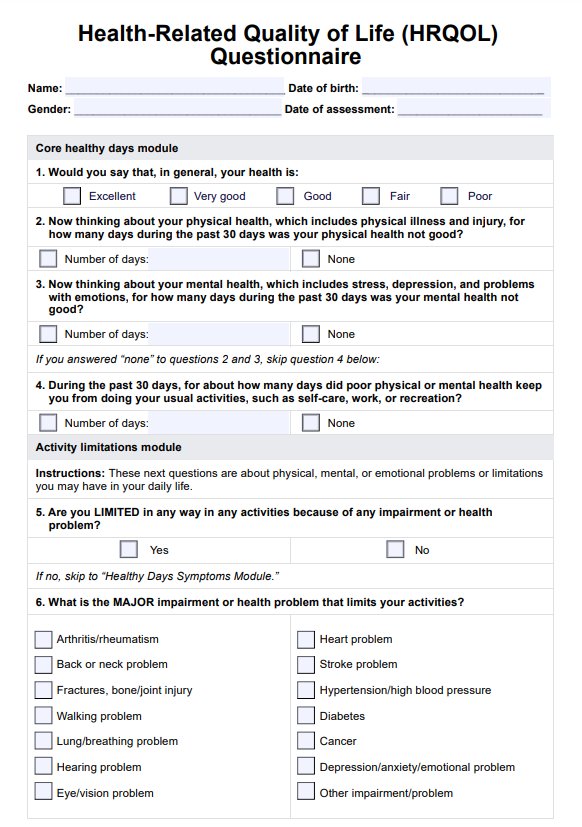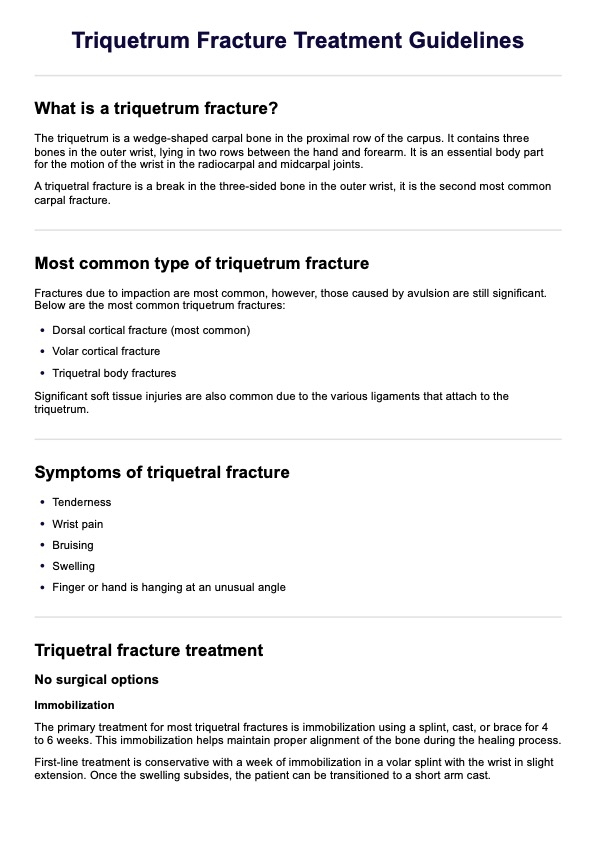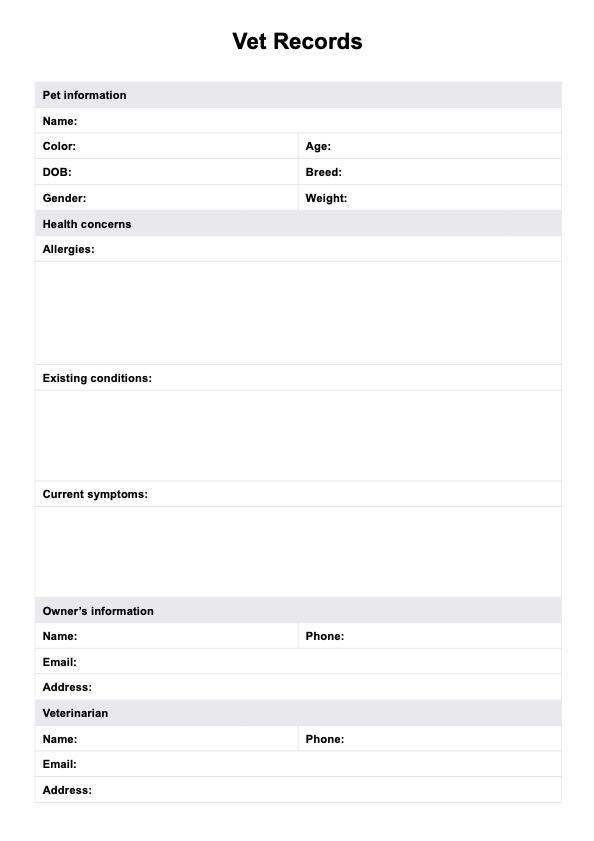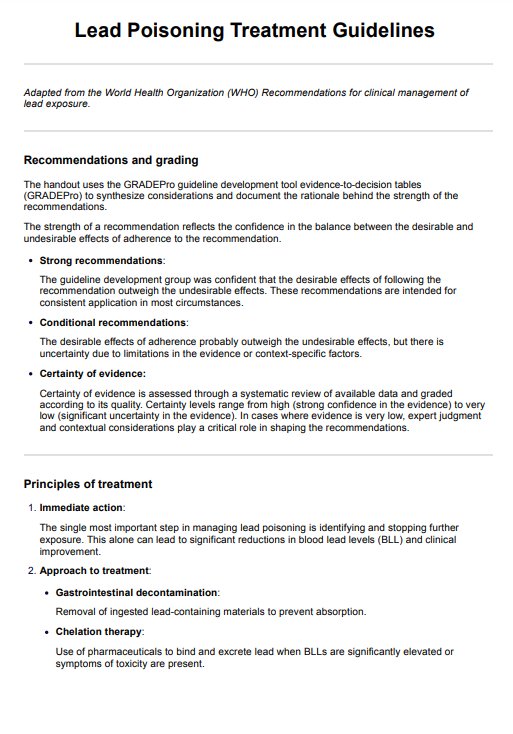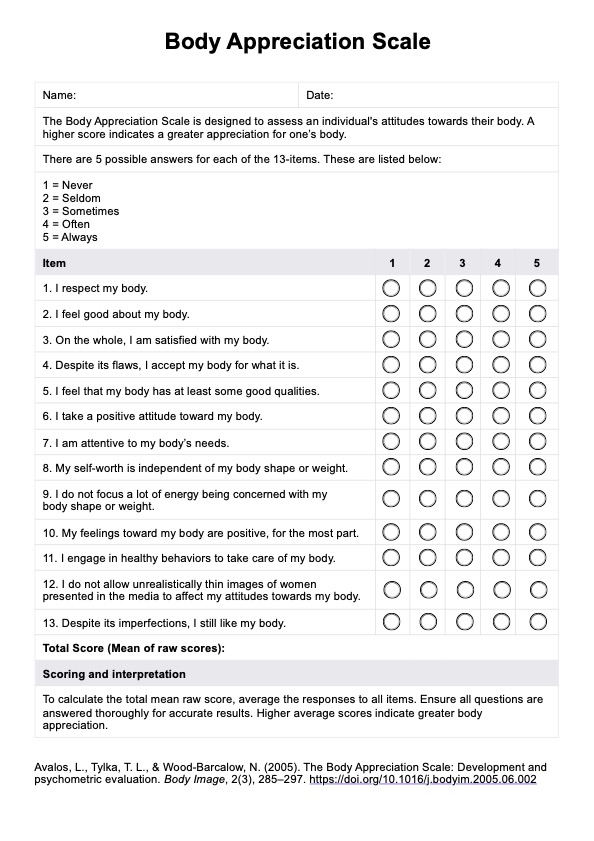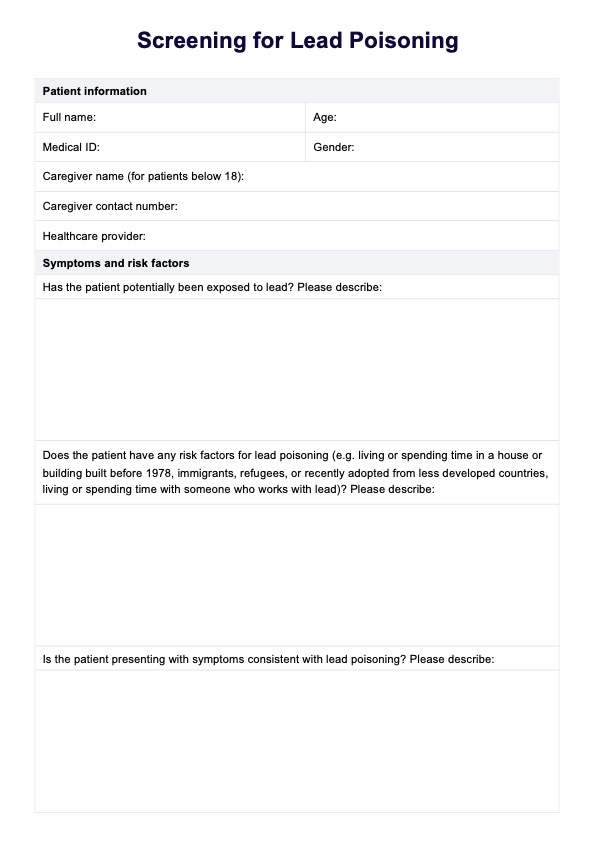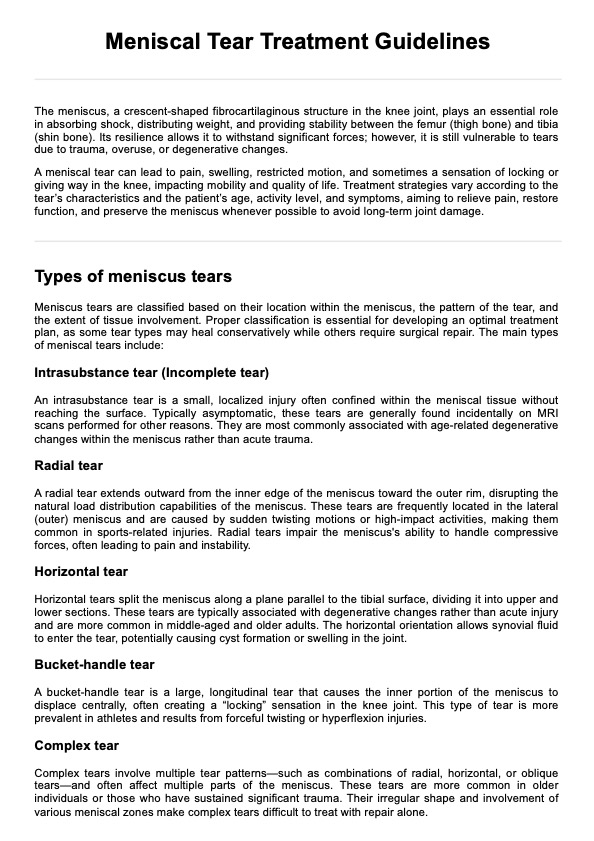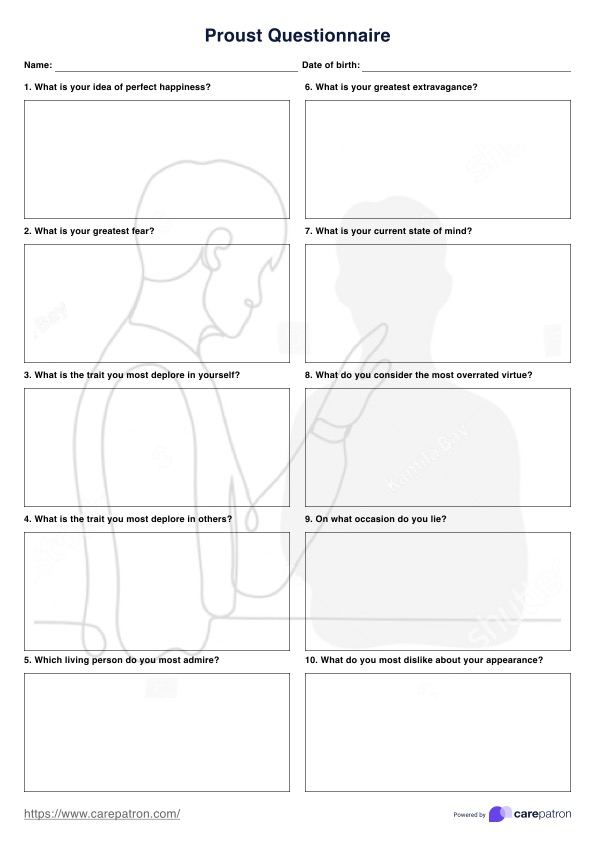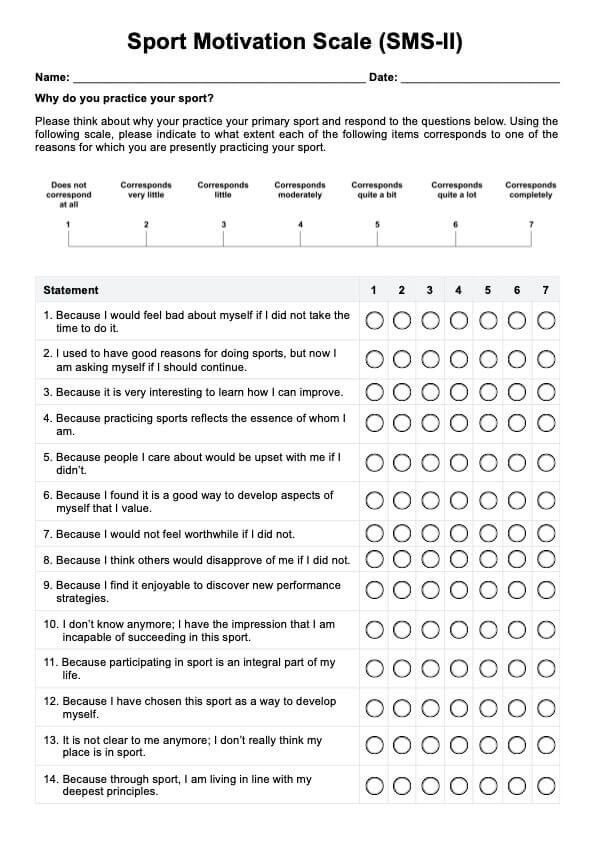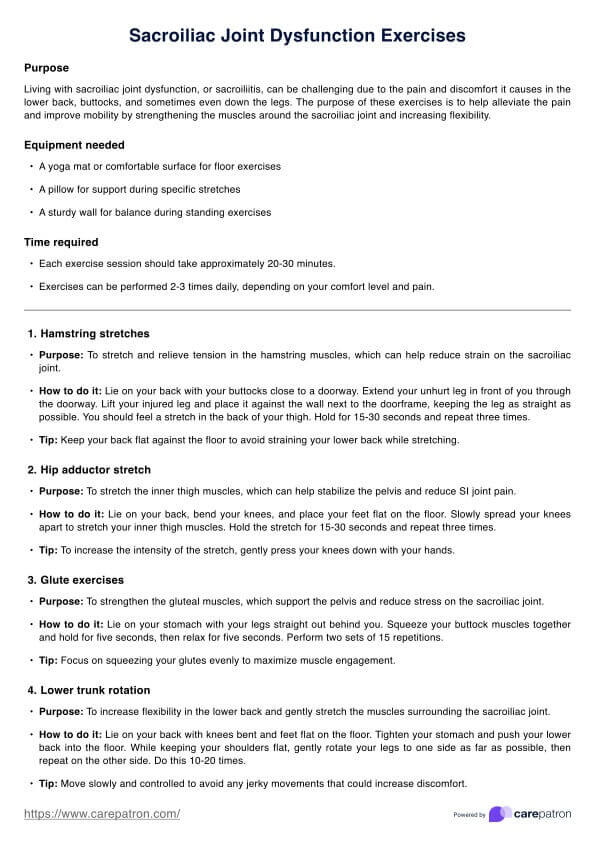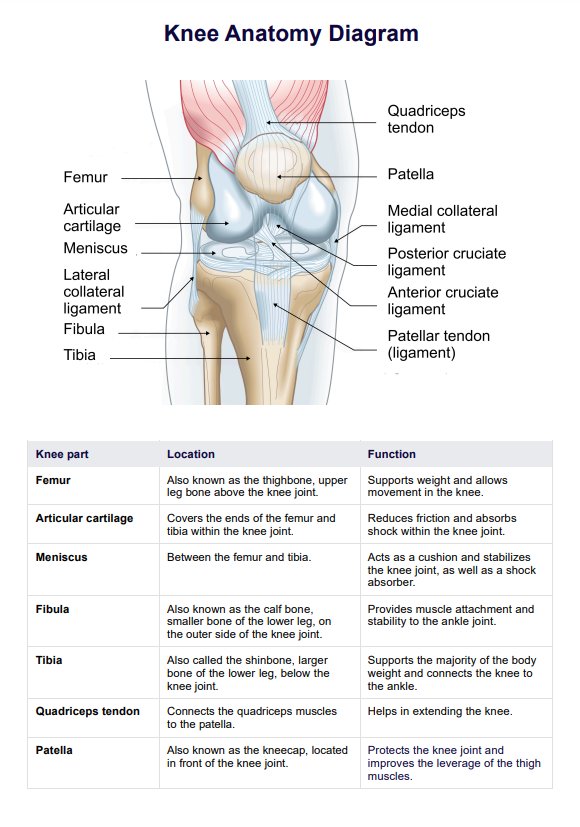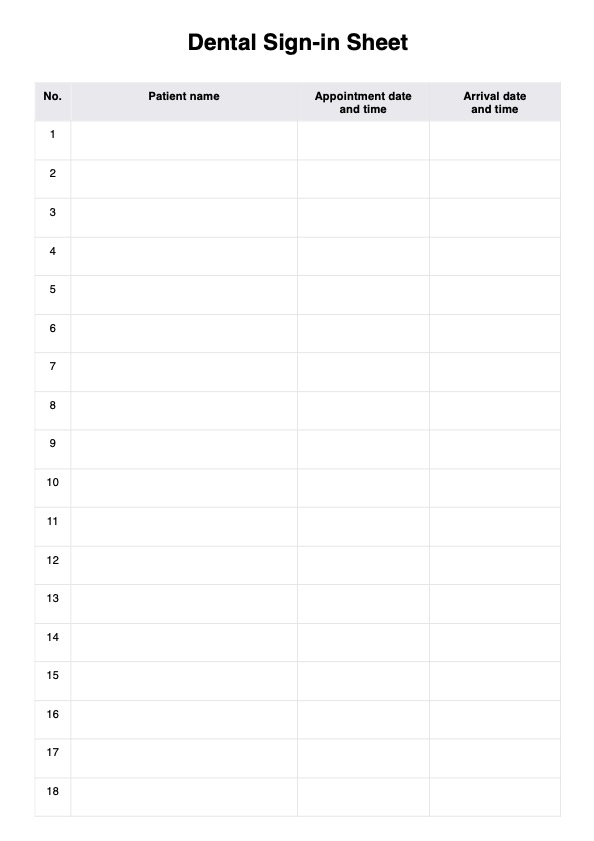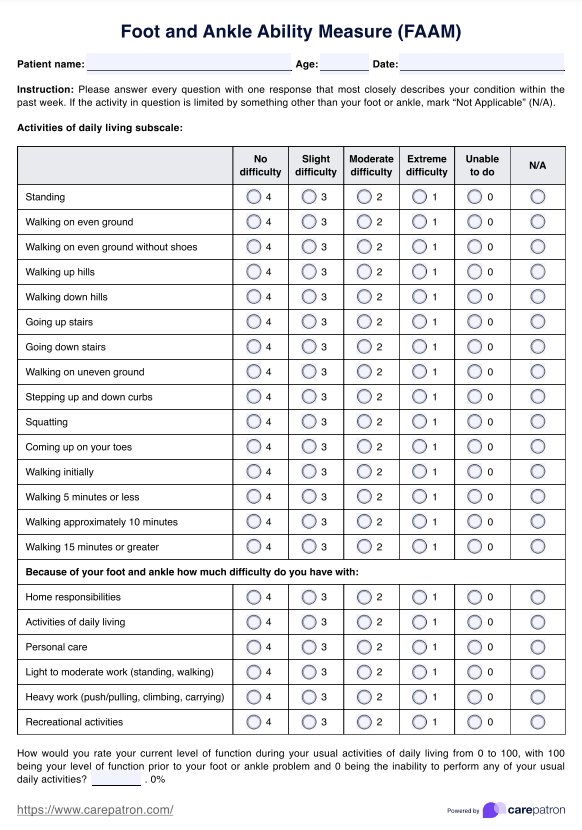Quebec Back Pain Disability Scale
Use the Quebec Back Pain Disability Scale to assess your patient's low back pain's impact on daily activities.


Common types of back pain
Back pain is a multifaceted condition, presenting in various forms that can affect individuals differently. Understanding the types of back pain is crucial for accurate diagnosis and effective treatment. Here, we explore the primary categories of back pain:
- Axial pain: Also known as mechanical pain, axial pain is localized to a specific spot or region in the back and is typically associated with musculoskeletal issues.
- Referred pain: Referred pain is not confined to a specific location and can emanate from different structures.
- Radicular pain: Commonly associated with conditions such as herniated discs or spinal stenosis, radicular pain can radiate from the neck to the arms or lower back to the legs.
Quebec Back Pain Disability Scale Template
Quebec Back Pain Disability Scale Sample
Measuring back pain disabilities
Evaluating the extent of back pain disabilities using a disability assessment is essential for effective diagnosis, treatment planning, and monitoring of patient progress. Several standardized questionnaires are widely used to measure the impact of back pain on daily activities. Here are some of the most commonly used scales:
- Oswestry Disability Index (ODI): The Oswestry Disability Index is a comprehensive 10-item questionnaire designed to assess how back pain interferes with a patient's daily life, specifically regarding activities such as walking, lifting, and personal care.
- Roland-Morris Disability Questionnaire (RDQ): The Roland-Morris Disability Questionnaire is a widely used tool that evaluates 24 daily activity limitations due to back pain.
- Quebec Back Pain Disability Scale (QBPDS): The Quebec Back Pain Disability Scale assesses functional disability in patients, especially those with acute/chronic low back pain and post-surgical patients.
Aside from the aforementioned scales, healthcare professionals may also use similar functional disability scales and other disability scales, such as the Low Back Outcome Score (LBOS), Low Back Pain Rating Scale (LBPRS), Pain Disability Index, and Back Pain Functional Scale, to assess the impact of pain on back pain patients. Accurate measurement of back pain disabilities is crucial for optimizing patient care and enhancing quality of life.
What is the Quebec Back Pain Disability Scale?
The Quebec Back Pain Disability Scale (QBPDS) is a condition-specific instrument designed to assess functional disability in patients suffering from low back pain (LBP). Developed by Kopec et al. in 1995, the QBPDS has become a valuable tool that uses factor analysis techniques and item response theory to evaluate back pain's impact on daily activities in clinical and research practice such as clinical trials. Researchers who evaluated construct validity and test-retest reliability of the QBPDS support using the scale for its positive results for both measurement properties and more.
The scale is composed of 20 items that describe various daily activities, which are grouped into six categories: bed/rest, sitting/standing, ambulation, movement, bending/stooping, and handling of large/heavy objects.
Patients are asked to rate the difficulty of each activity using a Likert scale ranging from 0 (no effort) to 5 (unable to perform). The total score, which can range from 0 to 100, indicates the level of functional disability, with higher scores signifying greater disability.
The QBPDS is applicable to various patient populations, including those with acute low back pain, chronic disabling pain, and individuals who have undergone back surgery. Its versatility and specificity make it an essential tool for assessing the severity of back pain and tracking changes over time in response to treatment.
Scoring and interpreting the QBPDS
The Quebec Back Pain Disability Scale is a specialized tool designed to evaluate the impact of lower back pain on daily activities. The total score, which can range from 0 to 100, reflects the overall level of functional disability, with higher scores indicating greater disability. The final score is calculated by summing the ratings for all items, providing a comprehensive measure of the patient's functional limitations.
Meanwhile, the interpretation of the QBPDS score is as follows:
- 0–20 points (Minimal disability): Patients with scores in this range experience little to no limitation in their daily activities and can perform most tasks without significant difficulty.
- 21–40 points (Mild disability): Scores within this range indicate that the patient has some limitations in daily activities but their back pain does not severely hinder their routine functions.
- 41–60 points (Moderate disability): Patients with score within this range experience significant limitations in their daily activities and their back pain affects their ability to perform routine tasks.
- 61–80 points (Severe disability): Scores in this range suggest that the patient faces substantial limitations due to back pain and may need assistance with many daily activities.
- 81–100 points (Very severe disability): Patients with scores in this range are severely impaired by back pain, which severely affects their daily functioning.
Do remember that interpreting the QBPDS score requires consideration of the individual context of each patient.
Next steps after conducting the Quebec Back Pain Disability Scale
After administering the Quebec Back Pain Disability Scale, it is essential to follow a systematic approach to interpret the results and plan the next steps in the patient's care. Here are the key steps typically involved:
- Clinical assessment: Conduct a comprehensive clinical assessment involving a physical examination, medical history review, and analysis of imaging results, to gain a deeper understanding of the patient's condition.
- Treatment planning: Based on the QBPDS score and clinical assessment, develop a tailored treatment plan. This can be a combination of a multidisciplinary approach, referral to a specialist, and conservative treatment or rehabilitation programs.
- Patient education: Discuss self-management strategies, such as ergonomic adjustments, proper body mechanics, and weight management.
- Follow-Up: Schedule regular follow-up appointments to monitor the patient’s progress. Reassess the patient’s condition using the QBPDS or other relevant scales to track improvements or any changes in their disability level to make the necessary adjustments.
Commonly asked questions
It's as simple as adding all of the scores from the different items.
In the case of back pain, pain should be assessed after every treatment or intervention to assess it's effectivity.
It's important to assess pain accurately so that both diagnosis and treatment recommendations are correct and optimized for the patient's condition.















